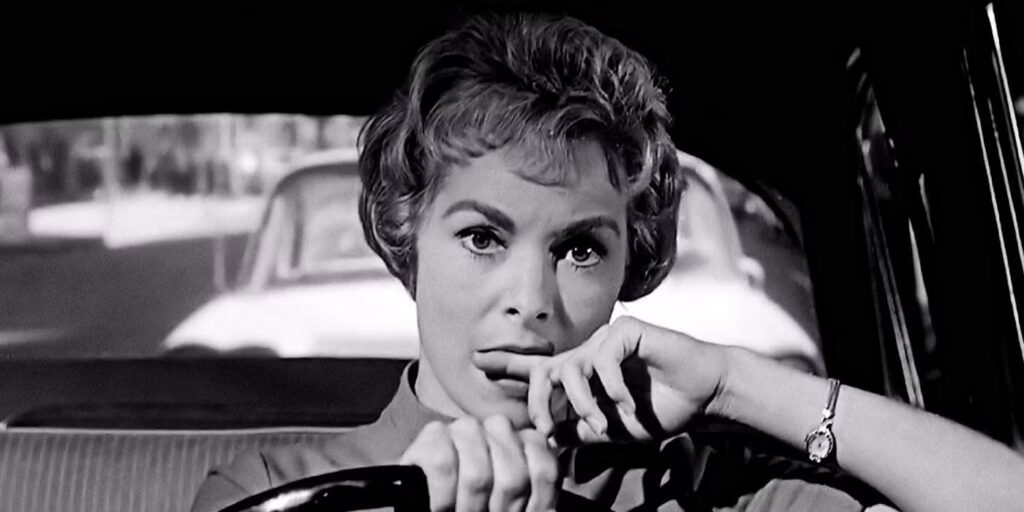
Are you looking for guidance on how to create a compelling protagonist?
To craft an engaging, believable main character, you need to understand the key characteristics of a strong protagonist — from their role in driving the story to their personal growth, motivations, and flaws.
It’s also essential to understand the characteristics and types of protagonists so that you can craft an engaging, believable character for your story, short film, movie, or play.
Let’s get into it!
Table of Contents
- What is a Protagonist?
- Types of Protagonists
- Creating a Protagonist
- The Role of the Protagonist in Storytelling
- The Importance of the Protagonist’s Journey
- Common Mistakes to Avoid When Developing a Protagonist
- Testing the Protagonist
- Tips for Writing a Great Protagonist
- Diverse Protagonists Across Stories
- Conclusion: The Power of a Well-Developed Protagonist
What is a Protagonist?
Let’s start off with a protagonist definition.
Typically, a story revolves around a protagonist – the main character who is the focus of the narrative and drives the plot forward. According to this definition, they are often seen as heroic or noble and are typically opposed by a main antagonist or villain.
A protagonist is the main character of a story, typically driving the plot and
undergoing significant growth or change.
In other words, the protagonist can be a hero, an anti-hero, or even a villain, depending on where they fall within the context of the story.
The key traits of any successful central character include relatability, depth, clear motives, and growth throughout the story. It is vital to start with the character’s backstory and create their personality by considering how past experiences shaped them.
Developing a likable yet flawed person who embarks on a journey full of change and growth can be done through careful crafting of expositions, interactions with other characters, and situations in which the protagonist is forced to make difficult decisions that impact future events.
It’s important to remember that not every protagonist is a hero — sometimes, they oppose traditional heroic traits. Learn more in our Protagonist vs. Antagonist breakdown.
Types of Protagonists
Not all protagonists fit the traditional hero mold. Understanding different protagonist types can help you craft a more compelling main character who fits your story’s needs.
1. Classic Hero
The Classic Hero is a protagonist who embodies bravery, morality, and the desire to do good. They often follow the traditional hero’s journey.
Example: Harry Potter (Harry Potter series)

2. Anti-Hero
Lacks conventional heroic qualities—often morally gray, cynical, or self-serving—yet still drives the story forward.
Example: Deadpool (Marvel Comics)
3. Tragic Hero
A protagonist with a fatal flaw (or hamartia) that leads to their downfall.
Example: Ned Stark (Game of Thrones)

4. Unreliable Protagonist
A narrator or main character whose credibility is in question due to bias, mental state, or intentional deception.
Example: Patrick Bateman (American Psycho)
5. Supporting Protagonist
A character who would typically be a side character but instead serves as the main focus of the story.
Example: Dr. Watson (Sherlock Holmes stories)
6. False Protagonist
Appears to be the main character early on but is later revealed not to be.
Example: Marion Crane (Psycho)

7. Villain Protagonist
A story’s central character who is actually the antagonist, often engaging in morally questionable or outright evil actions.
Example: Walter White (Breaking Bad)
8. Multiple Protagonists
A story with more than one main character, often used in ensemble casts or stories told from multiple perspectives.
Example: The Losers Club (IT)
| Protagonist Type | Description | Example |
|---|
| Classic Hero | A brave and moral character who follows the hero’s journey. | Harry Potter (Harry Potter series) |
| Anti-Hero | A protagonist with flaws, often morally gray or cynical. | Deadpool (Marvel Comics) |
| Tragic Hero | A character whose fatal flaw leads to their downfall. | Ned Stark (Game of Thrones) |
| Unreliable Protagonist | A narrator whose credibility is in question. | Patrick Bateman (American Psycho) |
| Supporting Protagonist | A side character who becomes the main focus. | Dr. Watson (Sherlock Holmes stories) |
| False Protagonist | Appears to be the main character but isn’t. | Marion Crane (Psycho) |
| Villain Protagonist | The central character is actually the antagonist. | Walter White (Breaking Bad) |
| Multiple Protagonists | More than one main character drives the story. | The Losers Club (IT) |
Related Celtx Reading: 15 Essential Character Archetypes (And How to Use Them)
Creating a Protagonist
A compelling protagonist is more than just a main character—they are the emotional core of the story. To craft a protagonist that resonates, consider the following key elements:
1. Core Desire and Motivation
- What does your protagonist want? (External goal)
- Why do they want it? (Internal motivation)
- What’s at stake if they fail?
Example: In The Hunger Games, Katniss Everdeen’s core desire is survival, but her deeper motivation is protecting her sister.

2. Strengths and Flaws
- What makes them capable? (Skills, intelligence, charm, resilience)
- What holds them back? (Fear, arrogance, self-doubt)
Tip: A perfect character is boring. Balance strengths with flaws to create depth.
3. Character Arc
- Positive Arc: They grow and change for the better. (Luke Skywalker in Star Wars)
- Negative Arc: They descend into darkness or destruction. (Walter White in Breaking Bad)
- Flat Arc: They remain steadfast while changing those around them. (Sherlock Holmes)
For more on crafting compelling character arcs: Character Arc Essentials: Transforming Characters from Good to Great
4. Relationships and Conflict
- Who challenges them?
- Who supports them?
- How do relationships shape their journey?
Example: Frodo’s relationship with Sam in The Lord of the Rings is crucial to his success.
5. Unique Voice and Personality
- How do they speak? (Dialogue, tone, vocabulary)
- How do they react under pressure?
- What quirks or habits make them stand out?
Tip: Give them a distinct way of speaking or an unusual perspective to make them memorable.
Visualize your protagonist’s journey with Celtx’s storyboarding tools. Map out each step of their emotional and physical growth to ensure a seamless narrative flow.
The Role of the Protagonist in Storytelling
Protagonists drive the story forward through their goals, choices, and the conflicts they face. Without them, stories would lack direction, tension, and emotional depth. Whether they’re overcoming personal struggles, battling external forces, or striving for change, their journey gives the narrative purpose.
Beyond advancing the plot, most protagonists serve as reflections of human growth. Readers are often inspired by how they face adversity, make difficult decisions, and transform over time. Their struggles can mirror our own, making their victories and failures resonate on a personal level.
Protagonists also help us connect more deeply to a story. When we see ourselves in their challenges or motivations, we become emotionally invested in their journey. This connection is what makes characters like Katniss Everdeen (The Hunger Games) or Walter White (Breaking Bad) so compelling—love them or hate them, their struggles feel real.
With a strong protagonist leading the way, a story becomes more than just entertainment—it becomes a lens through which readers can explore different perspectives, question their own beliefs, and experience personal growth.
The Importance of the Protagonist’s Journey
Since ancient times, storytelling has followed a familiar pattern: a protagonist embarks on an adventure, faces great challenges, and returns forever changed. This structure, often called the hero’s journey, is a powerful reflection of human experience.
A protagonist’s journey unfolds across three key dimensions—emotional, physical, and transformational. These elements shape their growth and make their story resonate with audiences.
The Emotional Journey
At the heart of every great protagonist is an internal struggle. Whether it’s overcoming fear, pride, or self-doubt, their emotional journey pushes them to confront their flaws and evolve. This inner conflict often mirrors real-life struggles, making their growth relatable and inspiring.
The Physical Journey
The protagonist’s external challenges test their resilience, intelligence, and skills. Whether navigating a dangerous world, fighting an adversary, or surviving against the odds, these physical trials shape their path and force them to adapt. Every obstacle serves as a lesson, preparing them for their ultimate challenge.
The Transformational Journey
By the end of the story, the protagonist is no longer the same person who set out on their journey. Their emotional struggles and physical hardships have led to profound change, revealing deeper truths about themselves and the world. This transformation is what makes their story meaningful—offering lessons, inspiration, and a lasting impact on the audience..

Bring your protagonist to life with Celtx’s character profiles.
Create detailed backstories, track their development, and visualize their arc with Celtx tools.
Common Mistakes to Avoid When Developing a Protagonist
Even the best stories can suffer from a weak protagonist. Here are some common pitfalls to avoid:
Playing it too safe – Don’t be afraid to take risks. Unique personalities, unexpected flaws, and bold character arcs make for a more compelling protagonist.
One-dimensional characters – A flat protagonist lacks depth and nuance. Develop complexity through meaningful interactions, life experiences, and tough decisions that shape their journey.
Lack of agency – A strong protagonist drives the story forward rather than simply reacting to events. Ensure they make choices that actively influence the plot.
Failure to connect with the audience – If readers can’t relate to the protagonist, they may struggle to stay invested. Give your character personal stakes, emotions, and flaws that make them feel real.
Testing the Protagonist
Crafting a strong protagonist requires objective feedback. Beta readers and critique partners can help refine your character:
- Beta readers – Offer general feedback on whether your protagonist is engaging, relatable, and consistent throughout the story.
- Critique partners – Fellow writers familiar with your work who provide deeper insights into your character’s development, motivations, and impact on the narrative.
Seeing your protagonist objectively can be challenging, but feedback from others is essential to shaping a character that truly resonates with readers.
Refine your protagonist with real feedback – Add collaborators to your Celtx script and get peer insights before your final draft. Test how your character resonates with readers and make adjustments in real-time.
[Start collaborating in Celtx today.]
Tips for Writing a Great Protagonist
Writing a great protagonist is both an art and a science; it requires combining creativity, thoughtfulness, and empathy.
Here’s how you can craft a character that feels real and compelling:
- Test Your Protagonist: Get feedback from beta readers and critique partners. They’ll provide insights on how your protagonist connects with the audience, helping you refine and strengthen your character.
- Focus on Growth: Make sure your protagonist has room to evolve. Their journey should be defined by both inner and outer growth, showing how their struggles shape them.
- Create Real-World Complexity: Avoid one-dimensional characters by giving your protagonist flaws, contradictions, and moments of vulnerability. This will make them relatable and engaging.
- Write with Empathy: Step into your protagonist’s shoes. Understand their fears, desires, and motivations. The more you empathize with your character, the more authentic their journey will feel.
- Establish Agency: Your protagonist should take action, not just react. Ensure they are an active participant in their story, driving the plot forward with decisions and resolve.
Diverse Protagonists Across Stories
Protagonists come in many forms, each with unique traits, challenges, and motivations. Let’s explore a few well-known examples to understand how different types of protagonists shape a story:
- Frodo Baggins (The Lord of the Rings series by J.R.R. Tolkien) – The reluctant hero who, despite his small stature and humble beginnings, takes on the monumental task of destroying the One Ring. His journey emphasizes courage, sacrifice, and the fight against overwhelming odds.
- Katniss Everdeen (The Hunger Games series by Suzanne Collins) – The reluctant leader and survivalist who becomes the symbol of rebellion against an oppressive regime. Her character shows resilience, resourcefulness, and the cost of leadership.
- Tony Stark (Iron Man from Marvel comics and movies) – A genius inventor and wealthy playboy turned superhero. His journey from selfishness to selflessness highlights redemption, personal growth, and the responsibilities of power.
- Elizabeth Bennet (Pride and Prejudice by Jane Austen) – A protagonist defined by her wit, independence, and strong moral compass. Her journey explores themes of societal expectation, personal growth, and the complexities of relationships.
- The Joker (The Dark Knight by Christopher Nolan) – An antihero and villain protagonist, whose chaotic nature and nihilistic worldview challenge societal norms. While he’s an antagonist, his role as a protagonist forces us to question moral boundaries and the nature of heroism.
- Ellie (The Last of Us video game franchise & HBO Series) – A survivor in a post-apocalyptic world, driven by the need for connection and the fight for survival. Her transformation is one of emotional growth and the struggle to maintain humanity in a brutal world.

These examples showcase how protagonists can vary widely in personality, role, and journey. The key is finding a unique blend of traits that fit the story you want to tell while also connecting with your audience.
Conclusion: The Power of a Well-Developed Protagonist
In conclusion, understanding the concept of a protagonist and the characteristics of a great protagonist can help create stories that are engaging, believable, and rich.
A great protagonist isn’t just someone who is noble or always makes the right choice, but someone with flaws, motivations, and reactions like any real person.
Writing a great protagonist requires considering what internal struggles, goals, and opinions their character might have, as well as their actions in reaction to external events.
Remember that by taking the time to develop strong protagonists, you will be able to help your reader relate to the characters and story, and keep them hooked until the end of your book or film!
Enjoyed this article? You might also like these:
- Game Over or Level Up? The Best/Worst Video Game Adaptations
- The Best and Worst Character Arcs in Modern TV and Film
- Feature, Documentary, or Short: Which Script Type Fits Your Story?


